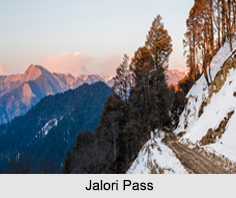 Situated at an elevation of 3, 292 m, the high mountain pass of Jalori Pass is situated in the Kullu district of the state of Himachal Pradesh. The area around the Jalori Pass is a natural paradise with seasonal blooming flowers and a bountiful of flora and fauna amidst the pristine solitude of the Himalayan Mountain Ranges.
Situated at an elevation of 3, 292 m, the high mountain pass of Jalori Pass is situated in the Kullu district of the state of Himachal Pradesh. The area around the Jalori Pass is a natural paradise with seasonal blooming flowers and a bountiful of flora and fauna amidst the pristine solitude of the Himalayan Mountain Ranges.
Jalori Pass Trek
Being the only nearest mountain pass to Delhi at a distance of about 600 km, the Jalori Pass is famous among the trekkers and adventurers out there. Trekking on the Jalori Pass leads to mesmerizing places like Shoja, Sereolsar Lake, Sakiran, Lambri, Bashleo and the Great Himalayan National Park as well as the forts of Fatehpurgarh, Kalagarh and Raghunathpur which is 3 km from the pass and was built by a Kulu king offering endless options to the explorer. The ideal time to conduct trekking in the Jalori Pass area is from mid-June to mid-October with temperatures ranging between 12 degree to 20 degree Celsius during the day and at night dropping to -2 degree to 6 degree Celsius. During the winter time, the roads leading to the Jalori Pass becomes inaccessible due to the heavy snowfall it receives.
Visiting Information on Jalori Pass
The Jalori Pass is accessible by various means of transportation. The Kullu Manali Airport at Bhuntar Town is about 50 km south of Manali and 10 km south of Kullu district and is well connected via roadways to the Jalori Pass. The Jogindar Nagar railway station is the closest which lies about 166 km from Manali.
This article is a stub. You can enrich by adding more information to it. Send your Write Up to content@indianetzone.com



















